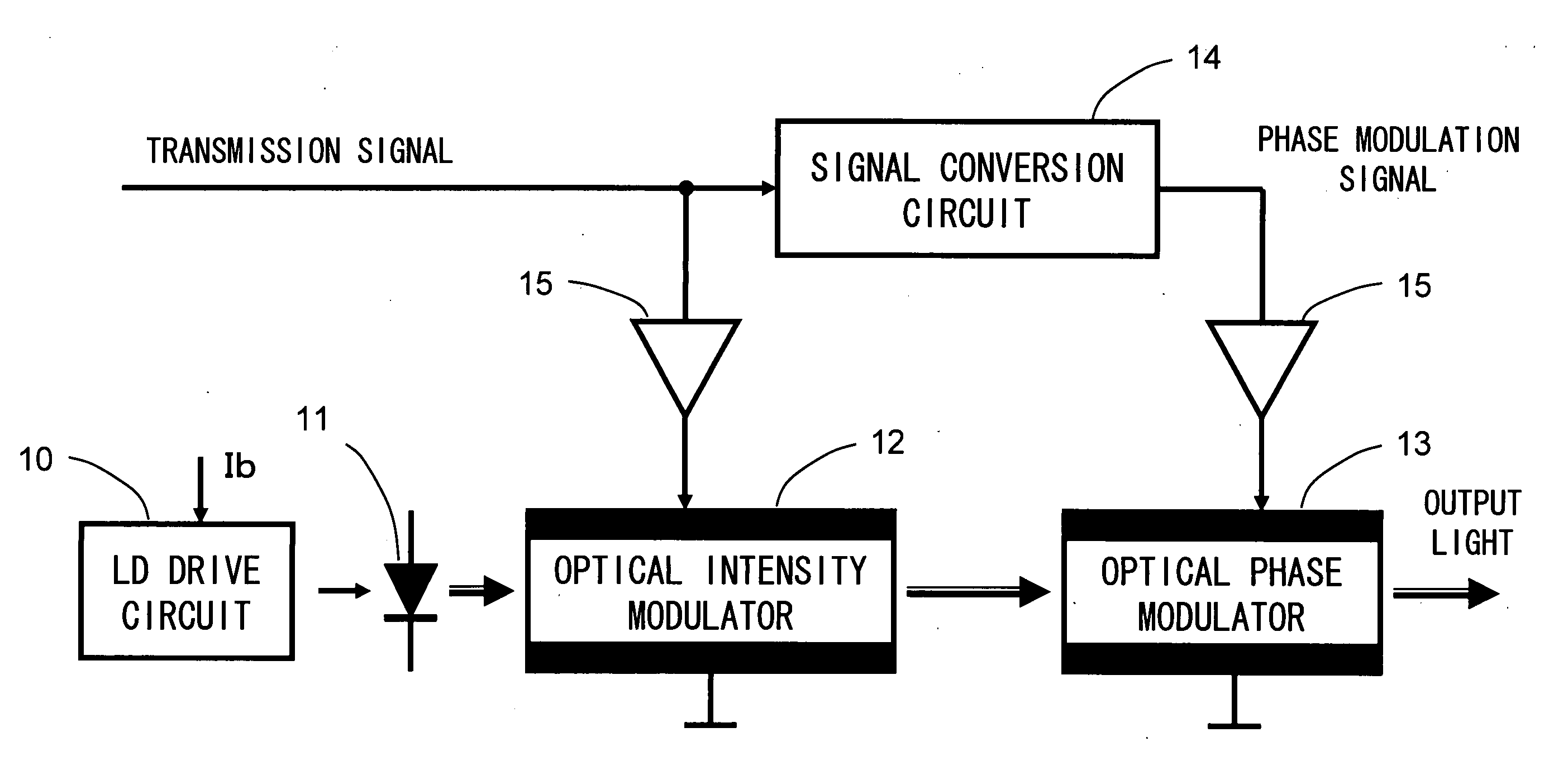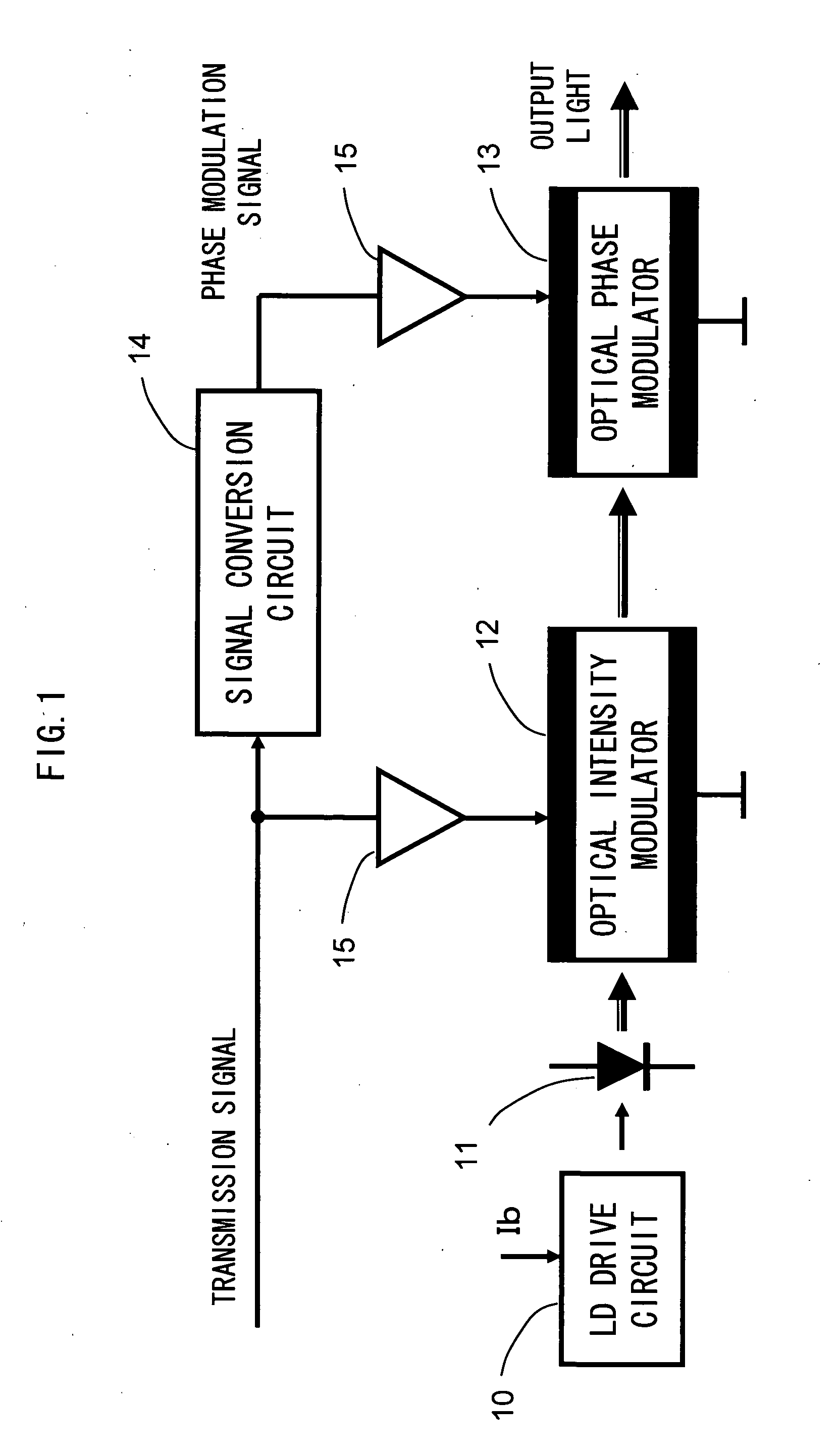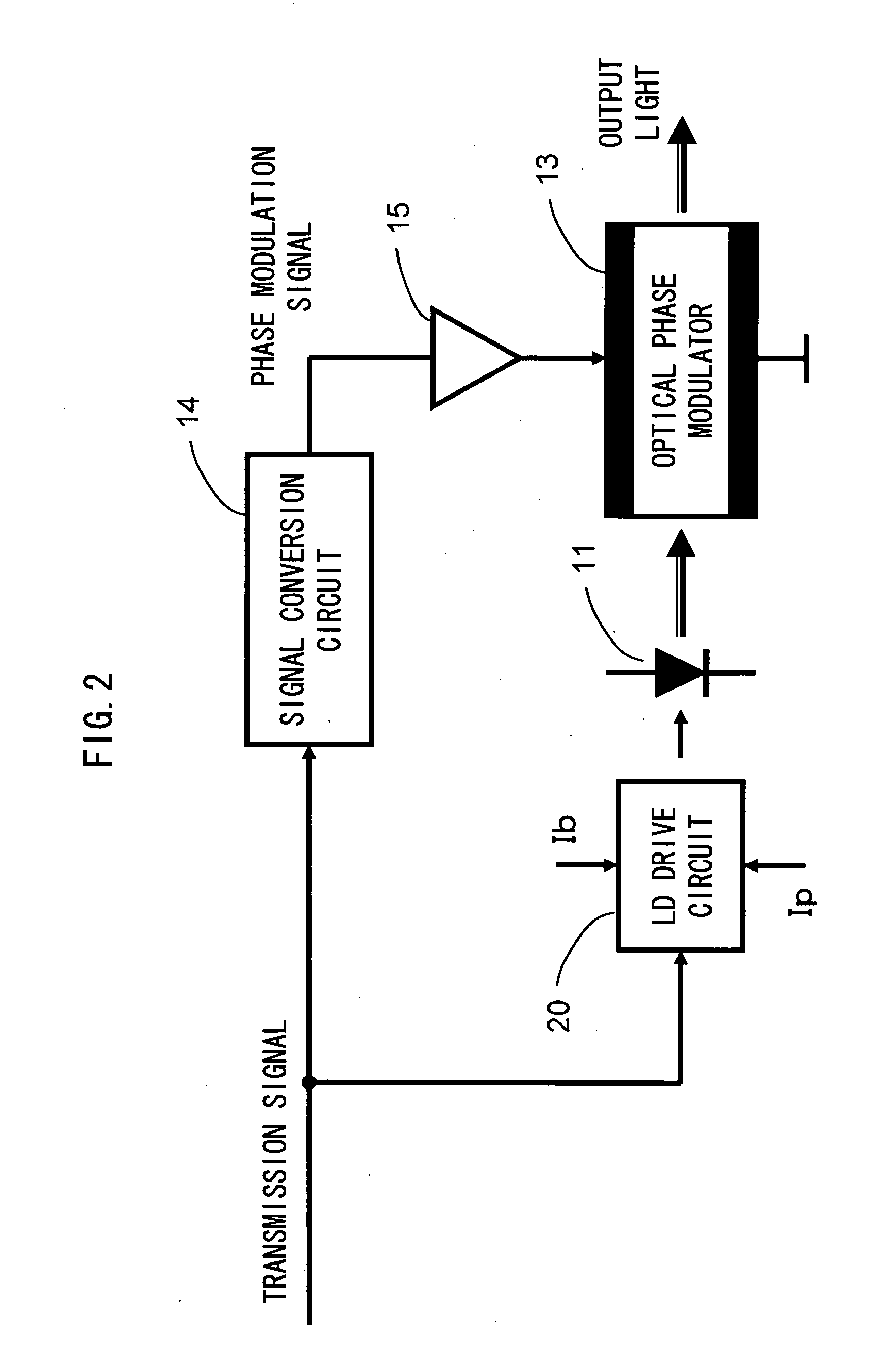Optical transmission device and optical phase modulator
a transmission device and optical phase technology, applied in the direction of logic circuits, instruments, pulse techniques, etc., can solve the problems of increasing the pulse width, imposing limitations on transmission rate and distance, and reducing the transmission rate and transmission distance. , to achieve the effect of facilitating the implementation of features and increasing the transmission rate and transmission distan
- Summary
- Abstract
- Description
- Claims
- Application Information
AI Technical Summary
Benefits of technology
Problems solved by technology
Method used
Image
Examples
first embodiment
[0055]FIG. 1 is a first diagram illustrating an optical transmission device according to an embodiment of the present invention. The optical transmission device is provided with the following components: a laser diode (LD) drive circuit 10, an LD 11, an optical intensity modulator 12, an optical phase modulator 13, a signal conversion circuit 14, and plural drivers 15. The LD 11 and the optical intensity modulator 12 are coupled through an optical path. The optical intensity modulator 12 and the optical phase modulator 13 are also coupled through an optical path. The LD drive circuit 10 applies an LD current in which a bias current (Ib) is provided. The LD 11 oscillates in response to the bias current set to be larger than or equal to a stimulated emission threshold LD current and then generates a continuous wave (CW) as a source of an optical carrier signal. The optical intensity modulator 12 modulates the intensity of the CW optical signal which is generated from the LD 11 in acco...
second embodiment
[0056]FIG. 2 is a second diagram illustrating an optical transmission device according to an embodiment of the present invention. The optical transmission device has an LD drive circuit 20 and an LD 11 which is coupled with an optical phase modulator 13 through an optical path. The LD drive circuit 20 applies to the LD 11 an LD drive current in which a bias current (Ib) and a modulation current (Ip) based on a transmission signal are provided. The LD 11 oscillates in response to the bias current (Ib) set to be larger than or equal to a stimulated emission threshold LD current. The LD 11 then generates a continuous wave (CW) as the source of an optical carrier signal which is directly modulated, so that the optical signal is in a non-luminescent state when the transmission signal is at logic level “0”, and the optical signal is in a luminescent state when the transmission signal is at logic level “1”. The optical phase modulator 13 modulates the phase of the intensity-modulated CW op...
third embodiment
[0059]FIG. 3 is a first diagram illustrating a condition in the optical phase modulator of FIG. 1 or FIG. 2. For example, in signal timing 0 to signal timing 9, a logic level sequence of a transmission signal over ten time slots is “0101100110”. In this condition, every time at least one optical signal element representing a non-luminescent state is located between optical signal elements each representing a luminescent state, the phases of the optical signal elements each representing the luminescent state are inverted with respect to each other.
[0060] In signal timing 0, output light is in the non-luminescent state, and a phase modulation signal is at logic level “1”. Thus, the phase of the output light is “π” in this timing. In signal timing 1, the output light is in the luminescent state. In this case, since the output light in the preceding timing is in the non-luminescent state, the phase is inverted to “0”. In signal timing 2, since the output light is in the non-luminescent...
PUM
| Property | Measurement | Unit |
|---|---|---|
| transmission distance | aaaaa | aaaaa |
| transmission distance | aaaaa | aaaaa |
| luminescent state | aaaaa | aaaaa |
Abstract
Description
Claims
Application Information
 Login to View More
Login to View More - R&D
- Intellectual Property
- Life Sciences
- Materials
- Tech Scout
- Unparalleled Data Quality
- Higher Quality Content
- 60% Fewer Hallucinations
Browse by: Latest US Patents, China's latest patents, Technical Efficacy Thesaurus, Application Domain, Technology Topic, Popular Technical Reports.
© 2025 PatSnap. All rights reserved.Legal|Privacy policy|Modern Slavery Act Transparency Statement|Sitemap|About US| Contact US: help@patsnap.com



